Mechanical–Chemical Activation of Cement-Ash Binders to Improve the Properties of Heat-Resistant Mortars
Abstract
1. Introduction
- bind free calcium oxide formed during the decomposition of hydrated compounds during heating, thereby eliminating the possibility of its quenching;
- do not form easily melting substances with Portland cement minerals;
- are resistant to high temperatures;
- reduce the shrinkage of hydrated Portland cement when heated;
- do not reduce the activity of Portland cement.
- by activating the breaking of Si-O bonds and the transfer of silicon ions into the mortar;
- by acting on the surface of minerals, replacing the OH group;
- as replacement of an oxygen atom by F on the surface of cement minerals.
2. Research Materials and Methods
- chemical composition: A12O3—21.5%; SO3—2.3%, free CaO (CaOf)—0.8%, MgO—2.1%, Na2O + K2O—1.1%, L.O.I.—4.30%;
- specific surface area—2800 cm2/g;
- physical properties of the fly ash: true density—2220 kg/m3; bulk density—900 kg/m3; normal consistency—26.7%; humidity—1.4%; activity on absorption CaO—39.4 mg/g.
3. Results and Discussion
- compressive strength X1 > X2 > X4 > X3;
- bending strength X1 > X2 > X4 > X3;
- dynamic modulus of elasticity X1 > X2 > X3 > X4;
- water absorption X1 > X2 > X4 > X3;
- conditional extensibility X1 > X4 > X3 > X2.
4. Conclusions
- The addition of 20–40% fly ash with 0.5–1% sodium silicofluoride to Portland cement significantly increases the degree of cement hydration at an early stage. The optimal dosage of fly ash for producing heat-resistant mortars is 30% of the cement mass, and for sodium silicofluoride, it is 1%.
- The developed method of mechanochemical activation, which involves increasing the specific surface area of the binder with the addition of Na2SiF6, allows for the complete binding of free CaO formed during the decomposition of cement hydration products at a temperature of 800 °C. The effect is enhanced when the specific surface area of the binder is increased to 3500 cm²/g.
- The use of 30% fly ash by cement mass with an addition of 1% Na₂SiF₆ increases the strength of the fly ash-cement paste by more than twice compared with the strength of plain cement paste when heated to 800 °C. The effectiveness of the fluoride activator further improves as the specific surface area of the fly ash-cement binder increases.
- After preheating the non-activated fly ash-cement mortar to 600–800 °C, strength loss reached up to 30%. Mechanical–chemical activation of the fly ash-cement binder prevents the reduction in strength after preheating the mortar.
- The addition of Na2SiF6 significantly lowers the temperature during deformations of the cement-ash binder in the range of 400 °C to 800 °C.
- Using the experimental design method, experimental–statistical models of mortar properties were developed, considering composition, heating temperature, and the number of heating–cooling cycles. These models enabled the formulation of quantitative dependencies for predicting mortar properties at elevated temperatures and ranking factors by significance. Optimal values for fly ash dosage, sodium silicofluoride additive, and binder-specific surface area were established. The activator’s positive effect on the thermal deformation of construction mortars was demonstrated.
Author Contributions
Funding
Institutional Review Board Statement
Informed Consent Statement
Data Availability Statement
Conflicts of Interest
Appendix A

Appendix B
| Experimental–Statistical Models | ||||||||||
|---|---|---|---|---|---|---|---|---|---|---|
| fc (Equation (5)) | fb (Equation (6)) | Ed (Equation (7)) | Wab (Equation (8)) | εc (Equation (9)) | ||||||
| Standard deviation | 0.741 | 0.561 | 0.349 | 0.552 | 0.228 | |||||
| Mean quadratic errors | 0.262 | 0.198 | 0.123 | 0.199 | 0.120 | |||||
| t-criterion (given) | 2.02 | 2.12 | 2.12 | 2.12 | 2.12 | |||||
| Designation of model coefficients | Value of coefficients | t-criterion (calc.) | Value of coefficients | t-criterion (calc.) | Value of coefficients | t-criterion (calc.) | Value of coefficients | t-criterion (calc.) | Value of coefficients | t-criterion (calc.) |
| b0 | 11.24 | 102.2 | 2.225 | 103.0 | 2.205 | 127.8 | 11.350 | 201.3 | 0.999 | 120.5 |
| b1 | 3.662 | 33.3 | 0.55 | 25.5 | 0.305 | 17.7 | −1.28 | 22.6 | 0.106 | 12.8 |
| b2 | 2.962 | 26.9 | 0.225 | 10.4 | 0.28 | 16.2 | −1.18 | 20.8 | −0.03 | 3.0 |
| b3 | −0.11 | 1.0 | −0.05 | 2.3 | −0.10 | 5.9 | 0.05 | 0.9 | −0.02 | 2.15 |
| b4 | −0.83 | 7.5 | −0.18 | 8.1 | −0.17 | 10.0 | 0.3 | 5.3 | 0.00 | 0.0 |
| b12 | 0.537 | 4.9 | 0.05 | 2.3 | −0.02 | 1.2 | 0.6 | 10.6 | 0.02 | 2.4 |
| b13 | −0.26 | 2.4 | 0.02 | 0.9 | −0.05 | 2.7 | 0.02 | 0.4 | 0.00 | 0.0 |
| b14 | −0.11 | 1.0 | 0.01 | 0 | 0.077 | 4.5 | 0.125 | 2.2 | −0.02 | 2.7 |
| Fisher’s criterions | ||||||||||
| Given Ft | 4.45 | 3.68 | 3.68 | 3.68 | 3.68 | |||||
| Calculated Fc | 3.81 | 2.72 | 3.02 | 2.86 | 3.54 | |||||
References
- Petzold, A.; Rohrs, M. Concrete for High Temperature; Elsevier Science Ltd.: Amsterdam, The Netherlands, 1970; pp. 197–236. [Google Scholar]
- Tursunova, G.; Atabaev, F.; Gulyamov, M. Definition of Puzzolanic Properties Active Mineral Additive in Portland cement. Am. J. Appl. Sci. 2021, 3, 7–12. [Google Scholar]
- Nagrockiene, D.; Girskas, G.; Skriptijnas, G. Properties of concrete modified with mineral additives. Constr. Build. Mater. 2017, 135, 37–42. [Google Scholar] [CrossRef]
- Kanamariapudi, L.; Bhanu, K.; Sonalagadda, K.; Sagapu, D.; Eluru, A. Different mineral admixtures in concrete: A review. SN Appl. Sci. 2020, 2, 760. [Google Scholar] [CrossRef]
- Khan, S.U. Effects of different mineral admixtures on the properties of fresh concrete. Sci. World J. 2014, 2014, 986567. [Google Scholar] [CrossRef] [PubMed]
- Surendra, B.; Rasendra, T. An experimental investigation on strength properties of concrete with partial replacement of fly ash and metakaolin with sand as fine aggregate. Int. Res. Eng. Technol. 2016, 3, 2150–2153. [Google Scholar]
- Sogl, M.; Reiterman, P.; Holcapen, O.; Konvalinka, P. Refractory Composites with Mineral Additive. In Materials Science Forum; Trans Tech Publications Ltd.: Bäch, Switzerland, 2015; pp. 49–53. [Google Scholar]
- Esen, Y.; Kurt, A. Effect of High Temperature in Concrete for Different Mineral Additives and Rates. KSCE J. Civ. Eng. 2018, 22, 1288–1294. [Google Scholar] [CrossRef]
- Sanjukta, S. A Review of Activation Methods in Fly Ash and the Comparison in Context of Concrete Strength. J. Basic Appl. Eng. Res. 2015, 10, 883–887. [Google Scholar]
- Bhatt, A.; Priyadarshini, S.; Abri, A.; Sattler, M.; Techapaphawit, S. Physical, chemical and geotechnical properties of coalflyash: A global review. Case Stud. Constr. Mater. 2019, 11, e00263. [Google Scholar]
- Abyzov, V.; Kononova, V. Refractory concretes with additives of fine-milled high-alumina industrial wastes. In IOP Conference Series: Materials Science and Engineering; IOP Publishing: Bristol, UK, 2018. [Google Scholar]
- Dvorkin, L.; Zhitkovsky, V.; Lushnikova, N.; Ribakov, Y. Metakaolin and Fly Ash as Mineral Admixtures for Concrete; CRC Press: Boca Raton, FL, USA, 2021; 240p. [Google Scholar] [CrossRef]
- Malhotra, V.; Mehta, P. High-Performans Fly Ash Concrete Material; Supplementary Cementing Materials for Sustainable Development Inc.: Ottava, ON, Canada, 2005; p. 120. [Google Scholar]
- Manz, O. Worldwide production of coal ash and utilization in concrete and other products. Fuel 1997, 76, 691–696. [Google Scholar] [CrossRef]
- Weshe, K. Fly Ash in Concrete. In Properties and Performance; Taylor and Francis: Abingdon, UK, 2019; p. 356. [Google Scholar]
- Kumar, N.; Abhilash, P.; Singh, R. Fly Ash for sustainable construction a review of fly ash concrete and its beneficial use case studies. Clean. Mater. 2022, 6, 100143. [Google Scholar]
- Thomas, M. Optimizing the Use of Fly Ash in Concrete; Portland Cement Association: Skokie, IL, USA, 2014; Volume 2, pp. 1–24. [Google Scholar]
- Willinska, I.; Pacewska, B. Influence of selected activation methods on hydration processed of mixture containing high and very high amount of fly ash. J. Therm. Anal. Calorim. 2018, 133, 823–843. [Google Scholar] [CrossRef]
- Sajedi, F.; Razak, H. Comparison of different methods for activation of ordinary Portland cement-slag mortars. Constr. Build. Mater. 2011, 25, 30–38. [Google Scholar] [CrossRef]
- Kang, H.; Yang, S.; Kim, S.; Lim, A.; Moon, J. Mechano-chemical activation for transforming bottom ash to reactive supplementary cementations material. Constr. Build. Mater. 2024, 411, 134523. [Google Scholar] [CrossRef]
- Dvorkin, L. Effective Ash-Containing Cement Concretes and Mortars; Caravela: Kyiv, Ukraine, 2022; p. 420. [Google Scholar]
- Fami, N.E.; Ez-zaki, H.; Khachani, N. Influence of mechanical activation of fly ash on the properties of Portland cement mortars. Mater. Today Proc. 2022, 58, 1419–1422. [Google Scholar] [CrossRef]
- Hela, R.; Orsakova, D. The mechanical Activation of Fly Ash. Procedia Eng. 2013, 65, 87–93. [Google Scholar] [CrossRef]
- Svatovska, L.; Sychev, M. Activated Cements Hardening; Stroi-Beton: Kyiv, Ukraine, 1983; p. 160. (In Russian) [Google Scholar]
- DSTU BV. 2.7-202:2009; Cements and Cement Materials. Methods of Chemical Analysis, Ukraine Standard. State Research Institute of Building Constructions: Kyiv, Ukraine, 2009.
- EN 197-1:2011; Cement—Part 1: Composition, Specifications and Conformity Criteria for Common Cements. Comité Européen de Normalisation: Brussels, Belgium, 2011.
- EN 451-1:2017; Method of Testing Fly Ash—Part 1: Determination of Free Calcium Oxide Content. Comité Européen de Normalisation: Brussels, Belgium, 2017.
- EN 196-1:2016; Methods of Testing Cement—Part 1: Determination of Strength. Comité Européen de Normalisation: Brussels, Belgium, 2016.
- EN 196-2:2013; Method of Testing Cement Chemical Analysis of Cement. Comité Européen de Normalisation: Brussels, Belgium, 2013.
- DSTU BV. 2.7-249:2011; Heat-Resistant Concrete. Technical Conditions, Ukraine Standard. State Research Institute of Building Constructions: Kyiv, Ukraine, 2011.
- EN 1015-11:2019; Methods of Test for Mortar for Masonry—Part 11: Determination of Flexural and Compressive Strength of Hardened Mortar. Comité Européen de Normalisation: Brussels, Belgium, 2019.
- Pal, P. Dynamic Poisson’s Ratio and Modulus of Elasticity of Pozzolana Portland Cement Concrete. Int. J. Eng. Technol. Innov. 2019, 9, 131–144. [Google Scholar]
- C215–08; Standard Test Method for Fundamental Transverse, Longitudinal, and Torsional resonant Frequencies of Concrete Specimens. American Society for Testing and Materials International: Philadelphia, PA, USA, 2008.
- Haach, V.G.; Carrazedo, R.; Oliveira, L.M.F.; Corrêa, M.R.S. Application of acoustic tests to mechanical characterization of masonry mortars. NDT E Int. 2013, 59, 18–24. [Google Scholar] [CrossRef]
- Aragón, G.; Pérez-Acebo, H.; Salas, M.Á.; Aragón-Torre, Á. Analysis of the static and dynamic elastic moduli of a one-coat rendering mortar with laboratory and in situ samples. Case Stud. Constr. Mater. 2024, 20, e02868. [Google Scholar] [CrossRef]
- Box, G.E.P.; Hunter, J.S.; Hunter, W.G. Statistics for Experimenters: Design, Discovery, and Innovation, 2nd ed.; Wiley: Hoboken, NJ, USA, 2005; p. 655. [Google Scholar]
- Dvorkin, L.; Dvorkin, O.; Ribakov, Y. Mathematical Experiments Planning in Concrete Technology; Nova Science Publishers: New-York, NY, USA, 2012; p. 172. [Google Scholar]

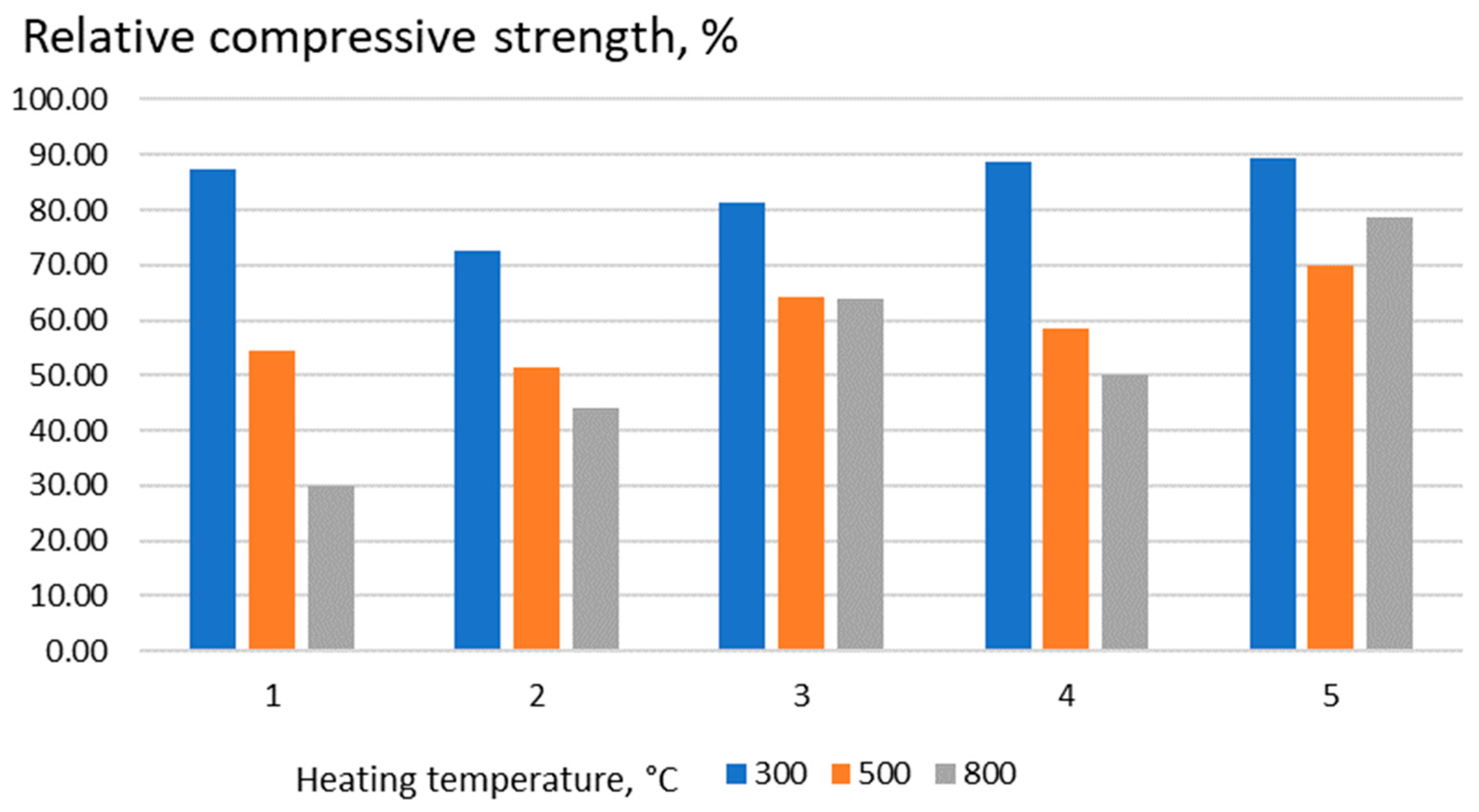
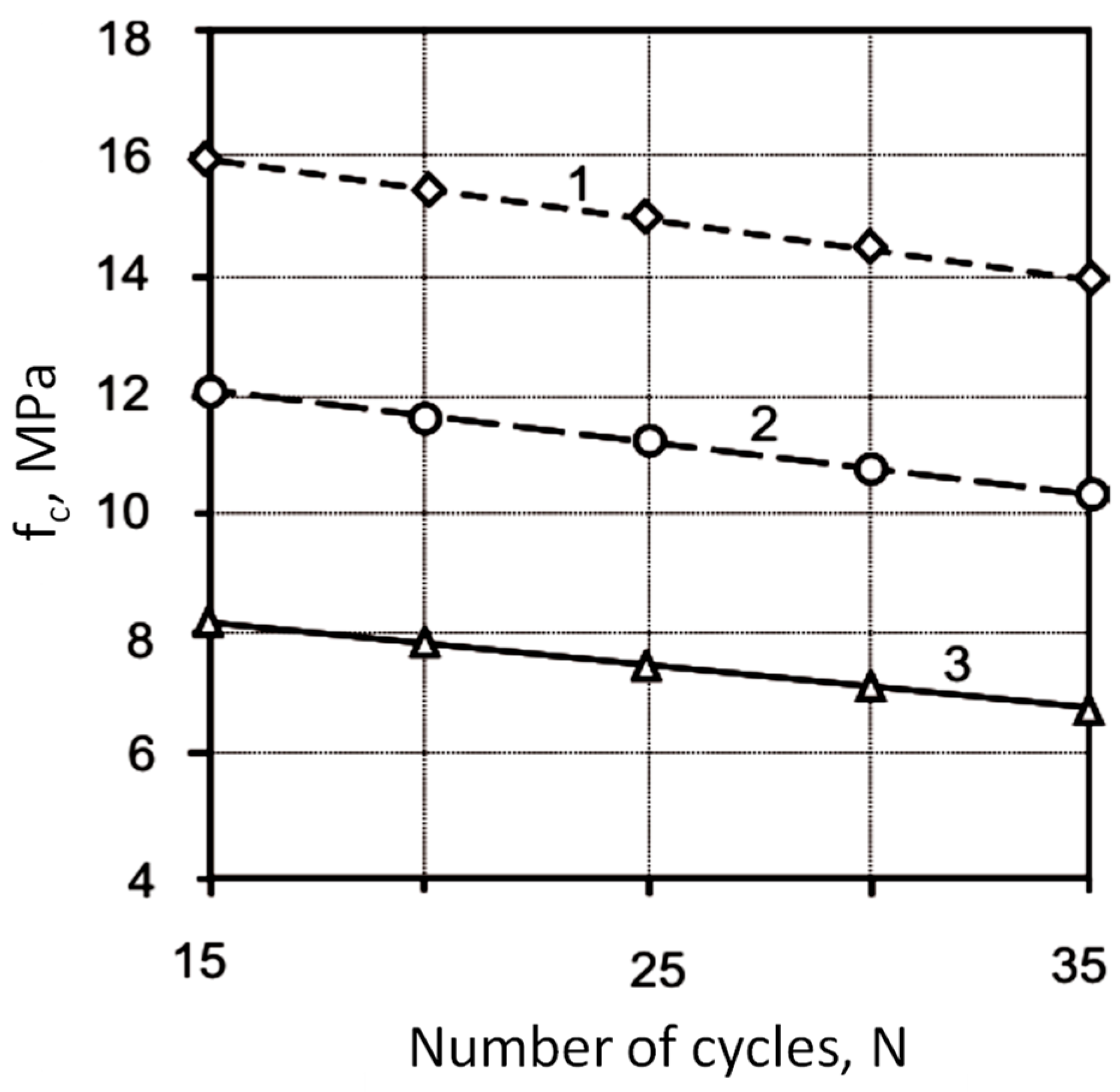
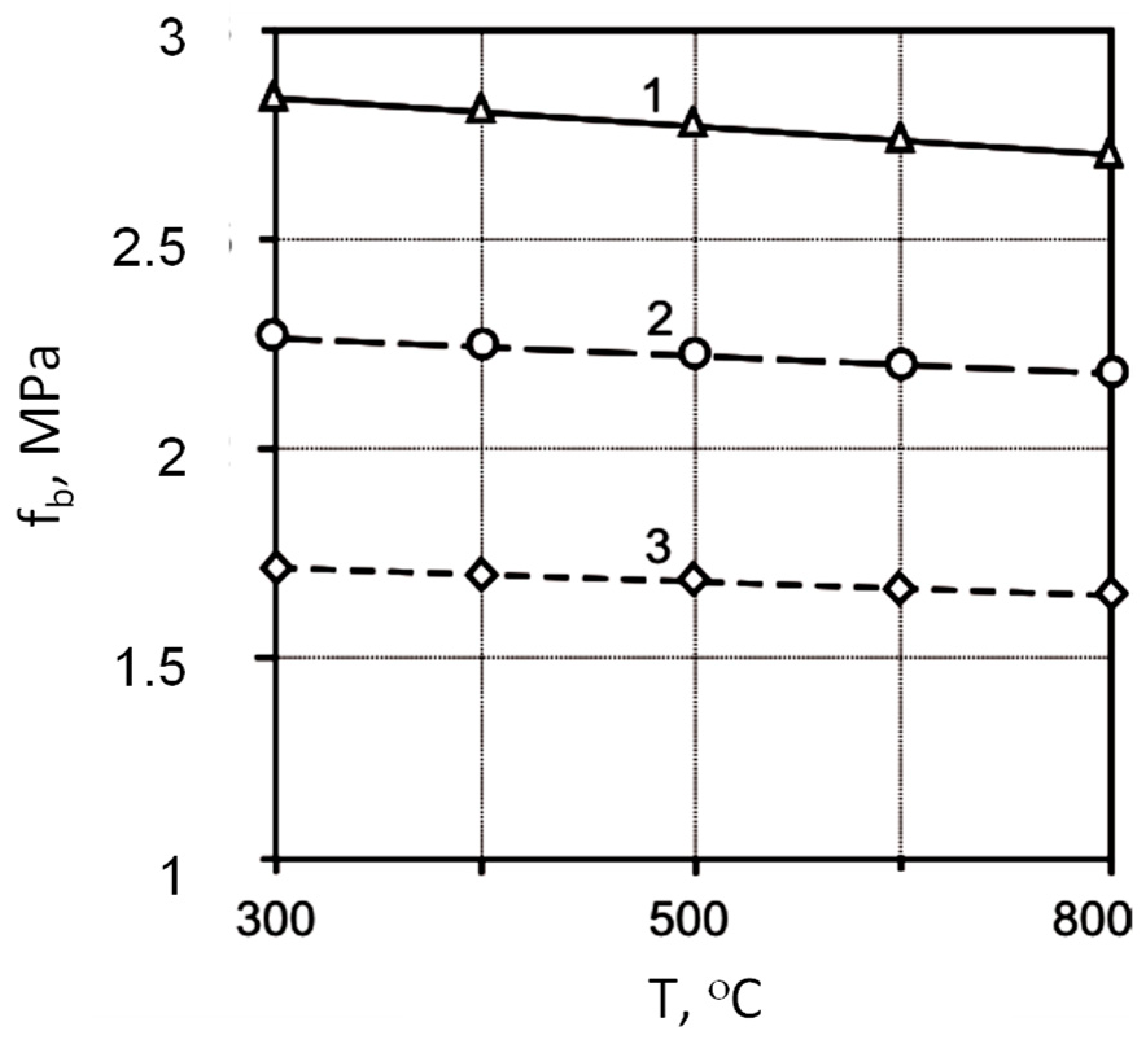

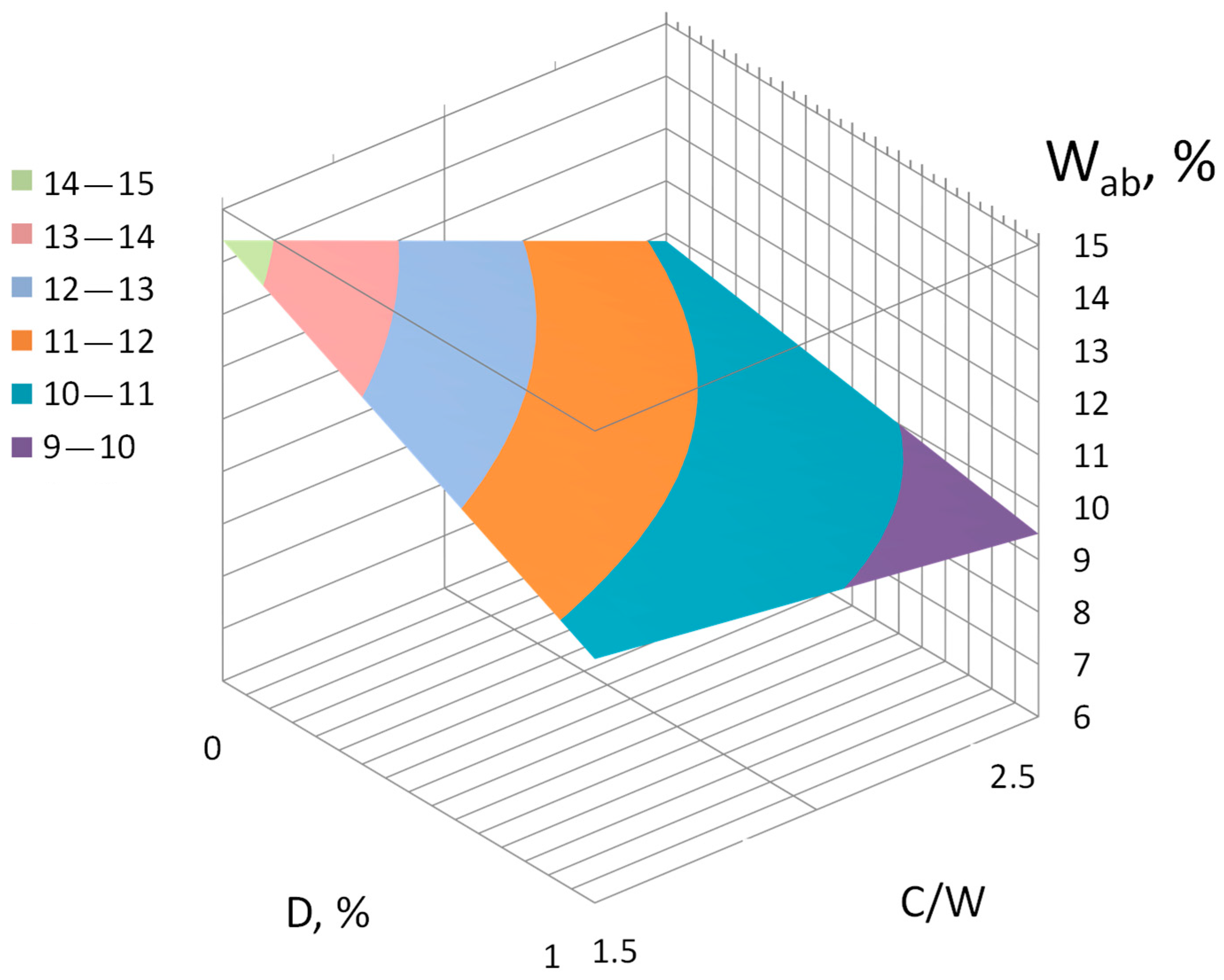
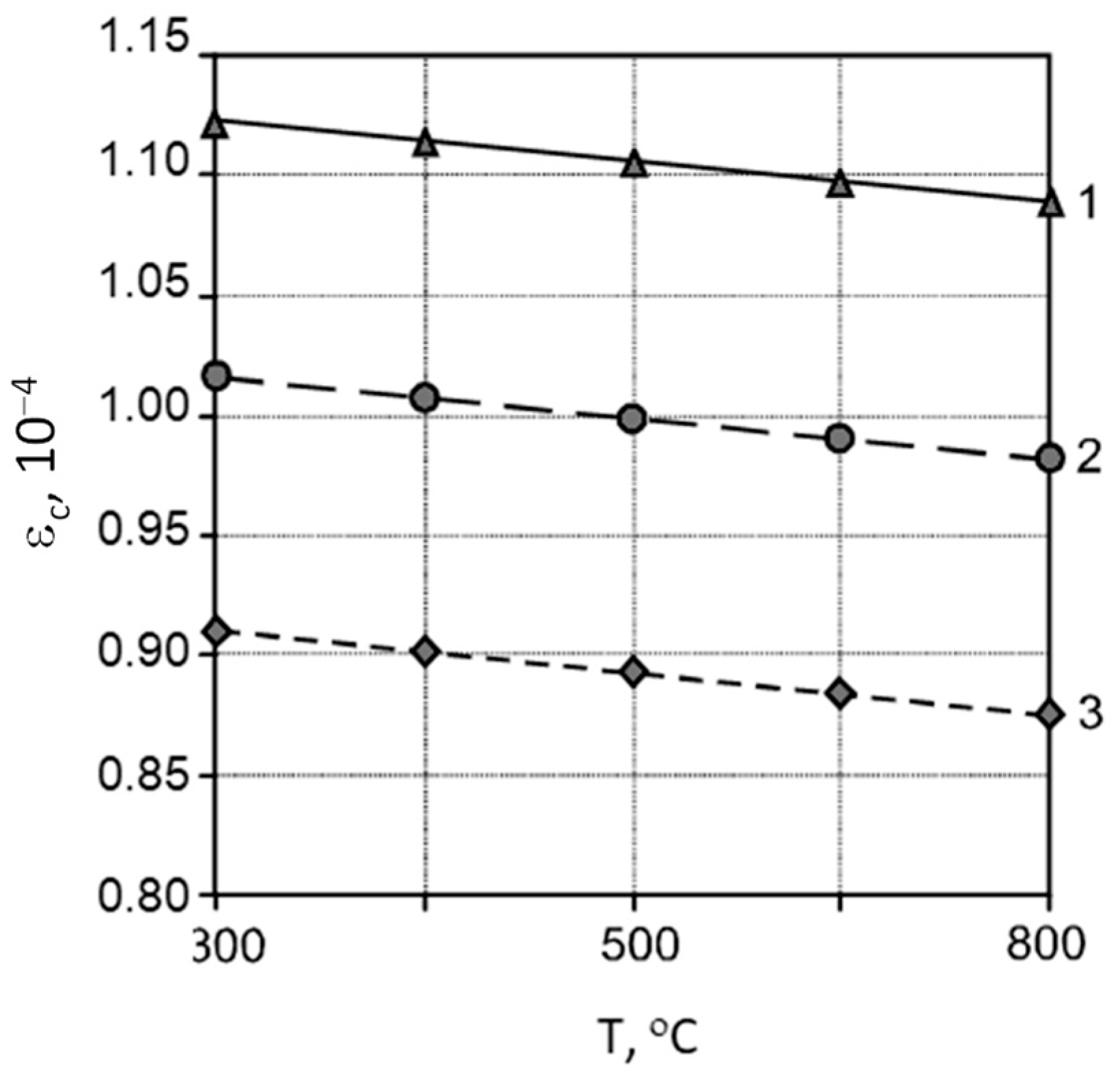
| The content of oxides (%) | SiO2 | 21.5 |
| A12O3 | 5.19 | |
| Fe2O3 | 4.02 | |
| CaO | 66.33 | |
| MgO | 0.62 | |
| R2O | 0.28 | |
| SO3 | 1.48 | |
| CaOf | 0.23 | |
| The content of minerals (%) | C3S | 59.26 |
| C2S | 20.05 | |
| C3A | 6.90 | |
| C4AF | 11.22 |
| Specific Surface Area (cm2/g) | Normal Consistency (%) | Time of Setting (h-min.) | Strength (MPa) | ||||
|---|---|---|---|---|---|---|---|
| Initial | Final | Flexure | Compression | ||||
| 7 Days | 28 Days | 7 Days | 28 Days | ||||
| 2900 | 25.1 | 2–30 | 4–10 | 4.9 | 6.5 | 31.5 | 52.4 |
| Factor | Levels of Variation | Range of Variation (Intervals) | ||
|---|---|---|---|---|
| −1 | +1 | |||
| Content additive Na2SiF6 (D) (%) | X1 | 0 | 1 | 1.0 |
| Cement–water ratio (C/W) | X2 | 1.5 | 2.5 | 1.0 |
| Heating temperature, (T) (°C) | X3 | 300 | 800 | 500 |
| The number of cycles of heating and cooling, (N) | X4 | 15 | 35 | 10 |
| No. | Experiment Planning Matrix | |||
|---|---|---|---|---|
| Additive Na2SiF6 Content (X1 (%)) | Cement–Water Ratio (X2) | Heating Temperature (X3 (°C)) | Number of Cycles (X4) | |
| 1 | 1 | 2.5 | 800 | 35 |
| 2 | 1 | 2.5 | 300 | 15 |
| 3 | 1 | 1.5 | 300 | 15 |
| 4 | 1 | 1.5 | 800 | 35 |
| 5 | 0 | 2.5 | 300 | 15 |
| 6 | 0 | 2.5 | 800 | 35 |
| 7 | 0 | 1.5 | 800 | 35 |
| 8 | 0 | 1.5 | 300 | 15 |
| No. | The Composition of the Binder (%) | Strength (MPa) *, at Normal Hardening at Age (Days) | Strength After Steaming ** (Tst = 95 °C), After 4 h (MPa) | |||||||
|---|---|---|---|---|---|---|---|---|---|---|
| Flexural | Compressive | |||||||||
| Portland Cement (PC) | Fly Ash (FA) | Na2SiF6 | 1 | 3 | 28 | 1 | 3 | 28 | ||
| 1 | 100 | - | - | 1.74/ 28 | 3.35/ 54 | 6.2/ 100 | 16.2/ 31 | 23.0/ 44 | 52.3/ 100 | 37.1/ 71 |
| 2 | 70 | 30 | - | 1.12/ 18 | 2.48/ 40 | 4.96/ 80 | 10.5/ 20 | 16.7/ 32 | 40.8/ 78 | 35.5/ 68 |
| Fly ash is ground to Ssp = 3500 cm2/g | ||||||||||
| 3 | 70 | 30 | 0.3 | 1.43/ 23 | 3.22/ 52 | 5.52/ 89 | 14.1/ 27 | 20.9/ 40 | 44.5/ 85 | 38.2/ 73 |
| 4 | 70 | 30 | 0.5 | 1.67/ 27 | 3.1/ 50 | 5.70/ 92 | 15.7/ 30 | 23.5/ 45 | 44.5/ 85 | 39.2/ 75 |
| 5 | 70 | 30 | 1.0 | 1.74/ 28 | 3.16/ 51 | 5.77/ 93 | 16.7/ 32 | 24.1/ 46 | 43.4/ 83 | 40.3/ 77 |
| Fly ash is not ground (Ssp = 2800 cm2/g) | ||||||||||
| 6 | 70 | 30 | 0.3 | 1.3/ 21 | 2.91/ 47 | 5.15/ 83 | 12.0/ 23 | 18.3/ 35 | 42.4/ 81 | 34.0/ 65 |
| 7 | 70 | 30 | 0.5 | 1.36/ 22 | 2.98/ 48 | 5.33/ 86 | 12.6/ 24 | 19.3/ 37 | 42.4/ 81 | 36.1/ 69 |
| 8 | 70 | 30 | 1.0 | 1.43/ 23 | 2.98/ 48 | 5.08/ 82 | 13.1/ 25 | 18.3/ 35 | 42.9/ 82 | 35.6/ 68 |
| No. | The Composition of the Binder (%) | Specific Surface (cm2/g) | Hydration Degree During a Period of Observation (Days) | ||||
|---|---|---|---|---|---|---|---|
| PC | FA | Na2SiF6 | 1 | 3 | 28 | ||
| 1 | 100 | – | – | 3500 | 35 | 42 | 55 |
| 2 | 80 | 20 | – | 2800 | 31 | 43 | 57 |
| 3 | 80 | 20 | – | 3500 | 33 | 48 | 61 |
| 4 | 80 | 20 | – | 4200 | 38 | 43 | 68 |
| 5 | 80 | 20 | 1 | 2800 | 34 | 48 | 58 |
| 6 | 80 | 20 | 1 | 3500 | 37 | 49 | 62 |
| 7 | 80 | 20 | 1 | 4200 | 39 | 51 | 69 |
| 8 | 60 | 30 | – | 2800 | 35 | 45 | 58 |
| 9 | 60 | 30 | – | 3500 | 37 | 49 | 62 |
| 10 | 60 | 30 | – | 4200 | 39 | 51 | 63 |
| 11 | 60 | 30 | 1 | 2800 | 39 | 52 | 65 |
| 12 | 60 | 30 | 1 | 3500 | 41 | 57 | 68 |
| 13 | 60 | 30 | 1 | 4200 | 44 | 61 | 72 |
| No. | Binder Composition (%) | Amount of CaOf After Heating at T in °C (%) | |||
|---|---|---|---|---|---|
| 500 | 600 | 700 | 800 | ||
| 1 | Portland cement 100 | 8.8 | 9.5 | 10.2 | 10.5 |
| 2 | Portland cement—70; fly ash—30 (Ssp = 2800 cm2/g); | 8.5 | 6.1 | 4.3 | 2.6 |
| 3 | Portland cement—70; fly ash—30 (Ssp = 2800 cm2/g); Na2SiF6—1 | 5.6 | 3.9 | 2.1 | 1.5 |
| 4 | Portland cement—70; fly ash—30 (Ssp = 3500 cm2/g) | 7.1 | 5.2 | 2.7 | 1.4 |
| 5 | Portland cement—70; fly ash—30 (Ssp = 3500 cm2/g); Na2SiF6—1 | 4.5 | 2.8 | 1.4 | 0.1 |
| No. | The Composition of the Binder (%) | Ssp (cm2/g) | Heating Temperature (°C) | ||||
|---|---|---|---|---|---|---|---|
| PC | FA | Na2SiF6 | 300 | 500 | 800 | ||
| 1 | 100 | - | - | 2800 | 87.5 | 54.5 | 30.5 |
| 2 | 70 | 30 | - | 2800 | 72.6 | 51.3 | 44.2 |
| 3 | 70 | 30 | 1 | 2800 | 81.2 | 64.5 | 63.8 |
| 4 | 70 | 30 | - | 3500 | 88.8 | 58.5 | 50.1 |
| 5 | 70 | 30 | 1 | 3500 | 89.4 | 69.9 | 78.5 |
| No. | Binder Composition (%) | Linear Deformations When Heated to Temperatures (°C) | ||||
|---|---|---|---|---|---|---|
| PC | FA | Na2SiF6 | 400 | 600 | 800 | |
| 1 | 100 | – | – | |||
| 2 | 70 | 30 | – | |||
| 3 | 70 | 30 | 1 | |||
| No. | Strength (MPa) | Dynamic Modulus of Elasticity, Ed (MPa∙104) | Water Absorption, Wab (%) | Conditional Extensibility εc | |
|---|---|---|---|---|---|
| Compressive fc | Bending fb | ||||
| 1 | 16.83 | 2.75 | 2.41 | 8.61 | 1.14 |
| 2 | 19.96 | 3.36 | 3.21 | 8.00 | 1.05 |
| 3 | 11.73 | 2.57 | 2.31 | 12.01 | 1.11 |
| 4 | 11.07 | 2.44 | 2.11 | 12.10 | 1.15 |
| 5 | 10.63 | 2.02 | 2.20 | 11.60 | 0.92 |
| 6 | 9.37 | 1.69 | 2.12 | 12.11 | 0.74 |
| 7 | 4.33 | 1.30 | 1.49 | 13.80 | 0.87 |
| 8 | 5.97 | 1.71 | 1.79 | 12.61 | 0.5 |
Disclaimer/Publisher’s Note: The statements, opinions and data contained in all publications are solely those of the individual author(s) and contributor(s) and not of MDPI and/or the editor(s). MDPI and/or the editor(s) disclaim responsibility for any injury to people or property resulting from any ideas, methods, instructions or products referred to in the content. |
© 2024 by the authors. Licensee MDPI, Basel, Switzerland. This article is an open access article distributed under the terms and conditions of the Creative Commons Attribution (CC BY) license (https://creativecommons.org/licenses/by/4.0/).
Share and Cite
Dvorkin, L.; Zhitkovsky, V.; Tracz, T.; Sitarz, M.; Mróz, K. Mechanical–Chemical Activation of Cement-Ash Binders to Improve the Properties of Heat-Resistant Mortars. Materials 2024, 17, 5760. https://doi.org/10.3390/ma17235760
Dvorkin L, Zhitkovsky V, Tracz T, Sitarz M, Mróz K. Mechanical–Chemical Activation of Cement-Ash Binders to Improve the Properties of Heat-Resistant Mortars. Materials. 2024; 17(23):5760. https://doi.org/10.3390/ma17235760
Chicago/Turabian StyleDvorkin, Leonid, Vadim Zhitkovsky, Tomasz Tracz, Mateusz Sitarz, and Katarzyna Mróz. 2024. "Mechanical–Chemical Activation of Cement-Ash Binders to Improve the Properties of Heat-Resistant Mortars" Materials 17, no. 23: 5760. https://doi.org/10.3390/ma17235760
APA StyleDvorkin, L., Zhitkovsky, V., Tracz, T., Sitarz, M., & Mróz, K. (2024). Mechanical–Chemical Activation of Cement-Ash Binders to Improve the Properties of Heat-Resistant Mortars. Materials, 17(23), 5760. https://doi.org/10.3390/ma17235760








